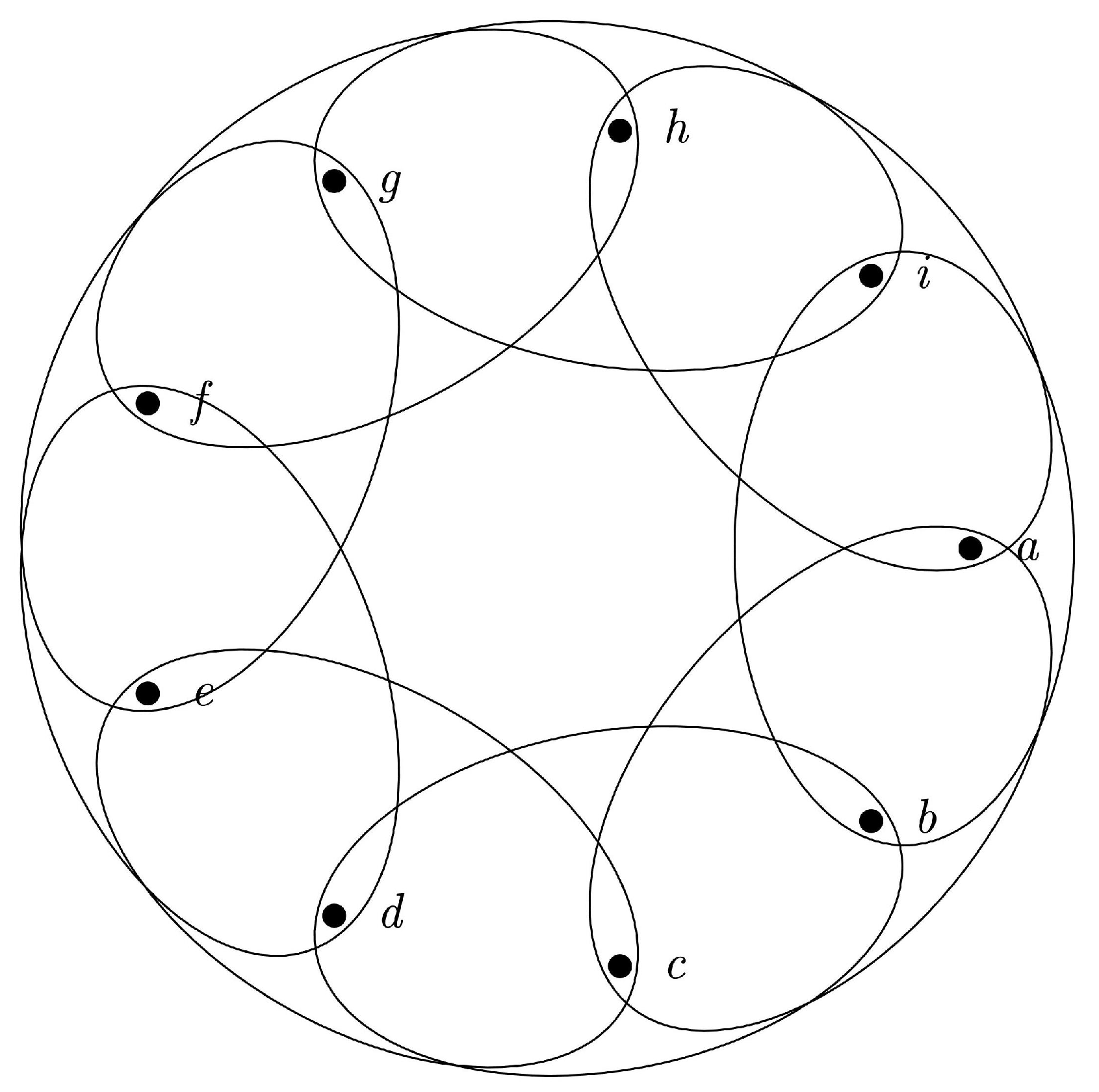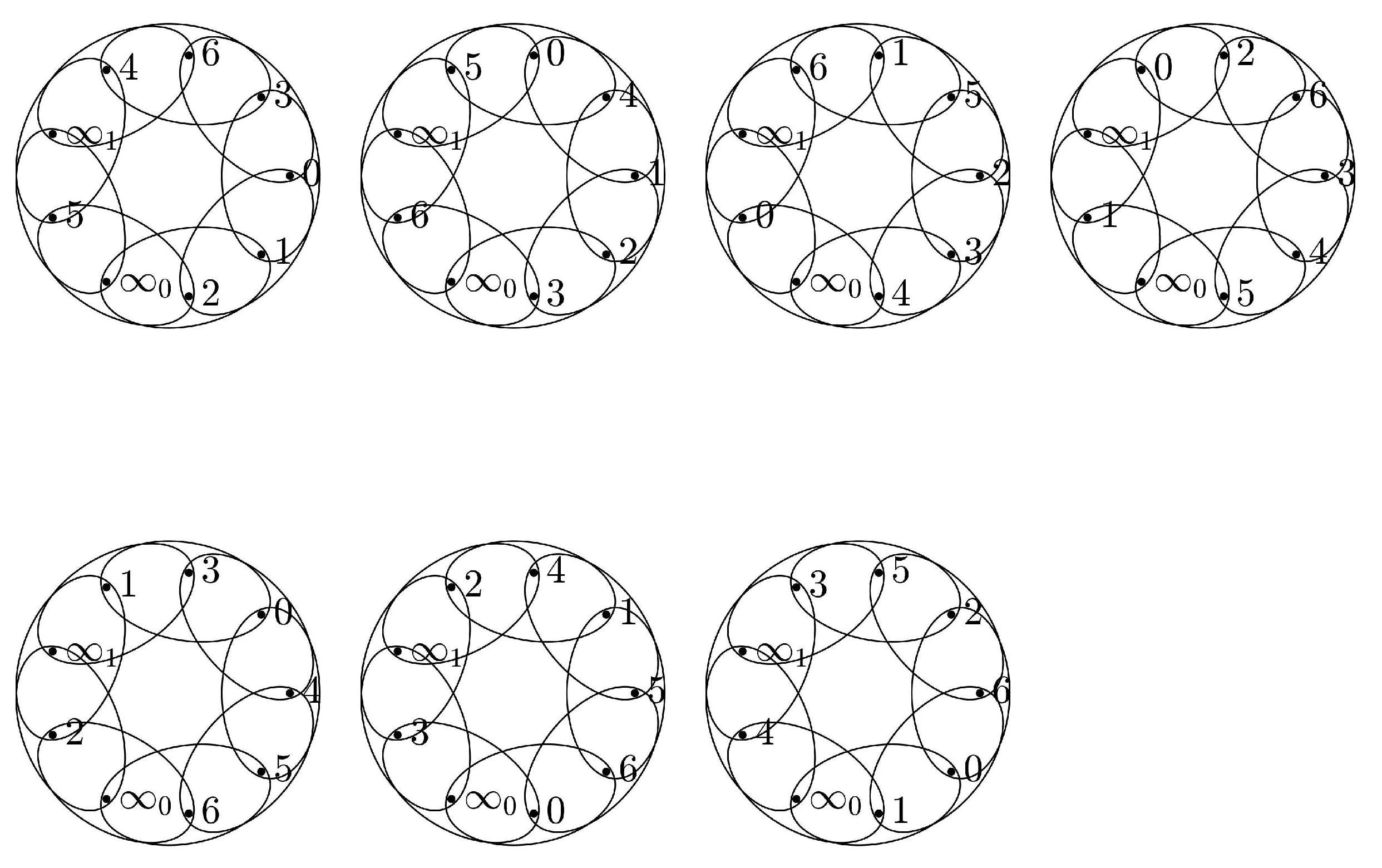Tight 9-Cycle Decompositions of λ-Fold Complete 3-Uniform Hypergraphs
Abstract
1. Introduction
2. Recursive Constructions
3. Some Small Orders
4. Results
5. Conclusions
6. Discussion
Author Contributions
Funding
Data Availability Statement
Conflicts of Interest
References
- Katona, G.Y.; Kierstead, H.A. Hamiltonian chains in hypergraphs. J. Graph Theory 1999, 30, 205–212. [Google Scholar] [CrossRef]
- Bailey, R.F.; Stevens, B. Hamiltonian decomposition of complete k-uniform hypergraphs. Discret. Math. 2010, 310, 3088–3095. [Google Scholar] [CrossRef]
- Hanani, H. On quadruple systems. Can. J. Math. 1960, 12, 145–157. [Google Scholar] [CrossRef]
- Meszka, M.; Rosa, A. Decomposing complete 3-uniform hypergraph into Hamiltonian cycles. Australas. J. Comb. 2009, 45, 291–302. [Google Scholar]
- Li, G.; Lei, Y.; Jirimutu, J. Decomposing complete 3-uniform hypergraph into 5-cycles. Appl. Mech. Mater. 2014, 672–674, 1935–1939. [Google Scholar] [CrossRef]
- Keszler, A.; Tuza, Z. Hypercycle systems of 5-cycles in complete 3-uniform hypercycles. Mathematics 2021, 9, 484. [Google Scholar] [CrossRef]
- Gionfriddo, M.; Milazzo, L.; Tuza, Z. Hypercycle systems. Australas. J. Comb. 2020, 77, 336–354. [Google Scholar]
- Meihua, M.; Guan, J. Decomposing complete 3-uniform hypergraph into 7-cycles. Opusc. Math. 2019, 39, 383–393. [Google Scholar] [CrossRef]
- Akin, M.; Bunge, R.C.; El-Zanati, S.I.; Hamilton, J.; Kolle, B.; Lehmann, S.; Neiburger, L. On tight 6-cycle decompositions of complete 3-uniform hypergraphs. Discret. Math. 2022, 345, 112676. [Google Scholar] [CrossRef]
- Bunge, R.C.; Darrow, B.; El-Zanati, S.I.; Hadaway, K.; Stover, A.; Romer, A.; Stover, A. On tight 9-cycle decompositions of complete 3-uniform hypergraphs. Australas. J. Comb. 2021, 80, 233–240. [Google Scholar]
- Zhao, H.; Wang, J. Tight 6-cycle decompositions of λ-fold complete bipartite 3-uniform hypergraphs. J. Kunming Univ. Sci. Technol. (Nat. Sci.) 2023, 48, 232–238. [Google Scholar]
- Wang, J. Cycle Decompositions of Hypergraphs and Their Large Sets. Master’s Thesis, North China Electric Power University, Beijing, China, 2023. [Google Scholar]
- Crescenzo, G.D.; Galdi, C. Hypergraph decomposition and secret sharing. Discret. Appl. Math. 2009, 157, 928–946. [Google Scholar] [CrossRef]


Disclaimer/Publisher’s Note: The statements, opinions and data contained in all publications are solely those of the individual author(s) and contributor(s) and not of MDPI and/or the editor(s). MDPI and/or the editor(s) disclaim responsibility for any injury to people or property resulting from any ideas, methods, instructions or products referred to in the content. |
© 2024 by the authors. Licensee MDPI, Basel, Switzerland. This article is an open access article distributed under the terms and conditions of the Creative Commons Attribution (CC BY) license (https://creativecommons.org/licenses/by/4.0/).
Share and Cite
Zhao, H.; Gu, J. Tight 9-Cycle Decompositions of λ-Fold Complete 3-Uniform Hypergraphs. Mathematics 2024, 12, 3101. https://doi.org/10.3390/math12193101
Zhao H, Gu J. Tight 9-Cycle Decompositions of λ-Fold Complete 3-Uniform Hypergraphs. Mathematics. 2024; 12(19):3101. https://doi.org/10.3390/math12193101
Chicago/Turabian StyleZhao, Hongtao, and Jianxiao Gu. 2024. "Tight 9-Cycle Decompositions of λ-Fold Complete 3-Uniform Hypergraphs" Mathematics 12, no. 19: 3101. https://doi.org/10.3390/math12193101
APA StyleZhao, H., & Gu, J. (2024). Tight 9-Cycle Decompositions of λ-Fold Complete 3-Uniform Hypergraphs. Mathematics, 12(19), 3101. https://doi.org/10.3390/math12193101



